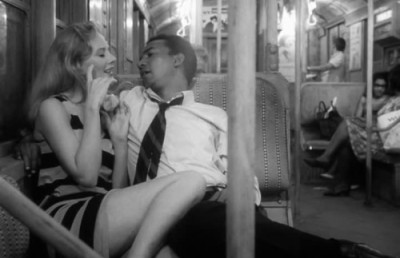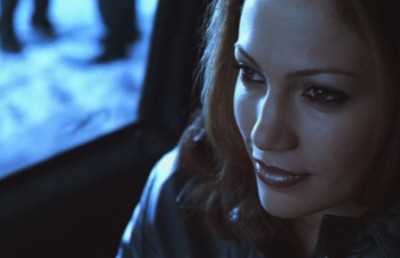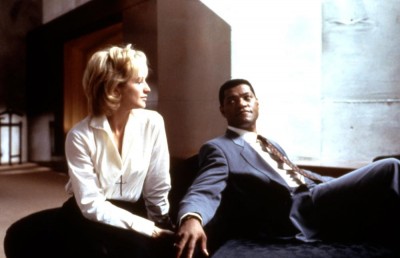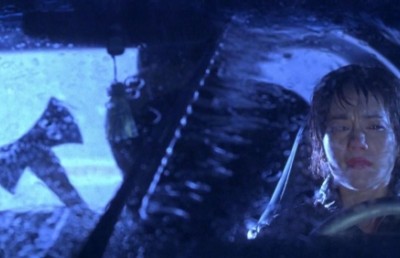Marlon Brando as Thinker and Actor in Julius Caesar, The Young Lions, One-Eyed Jacks, Last Tango in Paris, and A Dry White Season
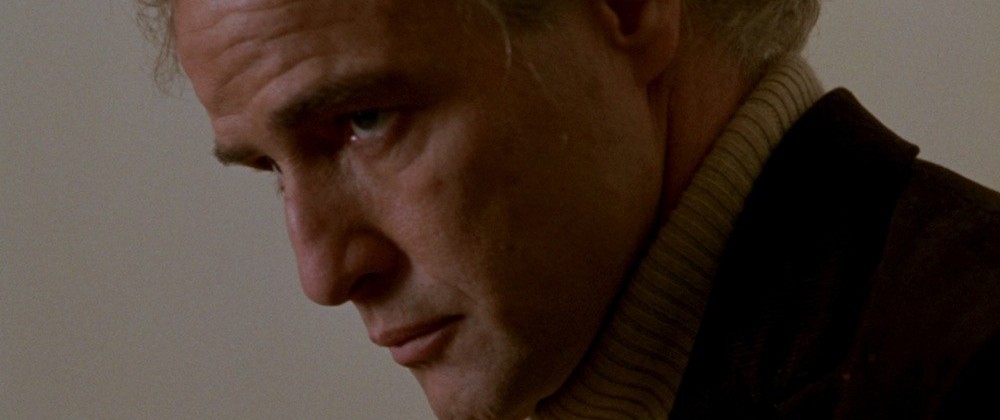
Marlon Brando was alive, sensual, hurt in On the Waterfront. Marlon Brando was grave and puckish in The Godfather. The popular and respected actor Marlon Brando (1924–2004) was a beautiful and strange man, a great talent, a figure of nature, freedom, creativity, sensuality, intelligence, and social awareness; a man concerned with experience and independence; a man whose individuality was perceived as eccentricity in a capitalist, conformist society; an artist who tried to identify and support both art and political activity that provoked thought and promoted progress; an artist able to portray the tragic and absurd aspects of human experience—so humorous that he seemed to be satirizing himself, his work, and all humanity. Yet, the scholar Susan L. Mizruchi—the author of The Rise of Multicultural America (2008) and The Power of Historical Knowledge: Narrating the Past in Hawthorne, James, & Dreiser (1988)—has surprised many of us with her interpretation of Marlon Brando as an intellectual—and she has written an intellectual biography of the actor in Brando’s Smile, published by W.W. Norton in 2014. Yet, reading the engaging, very intelligent, and deeply respectful book, it is easy to perceive its idealism. One wonders about the intellect’s inclination to repress the difficult, the messy, and the unacceptable.
Marlon Brando appeared in stage plays such as I Remember Mama (19440–1946), Antigone (1946), and A Streetcar Named Desire (1947–49); and in the films The Men (1950), A Streetcar Named Desire (1952), Julius Caesar (1953), Guys and Dolls (1955), The Young Lions (1958), One-Eyed Jacks (1961), Mutiny on the Bounty (1962), Reflections in a Golden Eye (1967), The Nightcomers (1972), The Missouri Breaks (1976), A Dry White Season (1989), Don Juan De Marco (1995), and The Score (2001). Of course, there has been so much excrement shoveled in Marlon Brando’s direction over the years—much of it thrown with the force of envy and resentment and stupidity—that there is something necessarily cleansing and useful about a book that takes fact and logic and respect as standards. Susan L. Mizruchi does something that not enough biographers do—Mizruchi helps us to understand the development of an artist as rooted in his natural responses, his curiosity, his environment, his education, and his opportunities: Marlon Brando was an adventurer, fascinated by people; his mother Dodie was a talented regional actress; and Brando’s studies at the New School for Social Research—an institution of art, intellect, and politics, where he met the great acting teacher Stella Adler—prepared him with unique theatrical resources (an ability to analyze scripts, interpret characters in a complete way, and master the art of make-up). Sense memory, intellect, meditation, movement, and voice were part of his toolkit. Brando’s popularity on stage and in film would give him that rare thing—freedom.
Marlon Brando was a master of observation and imitation, of improvisation and invention. Brando observed people’s faces and bodies for inadvertent revelations of feeling, of motive (something that might have been necessary growing up in the home of a chemical manufacturer father who was distant and a mother who drank). “He created characters so powerfully authentic that audiences refused to believe that these creations were not real. While many considered him a great actor, they missed how denying him distance from his roles qualified that greatness,” claims Susan Mizruchi in the introduction to her Brando biography (Brando Smiles; page xv). Mizruchi identifies Marlon Brando as a man of complexity and transformation, defying the establishment of a public persona. Although Brando was resistant to most formal schooling—he did not finish high school and was expelled from a military academy—he was an enthusiastic reader, a great reader, beginning in his youth, and “the library he amassed over time, a significant portion of it annotated, suggests a profoundly inquisitive mind” (page xxii). Brando read for illumination, for pleasure, for work, doing vast and comprehensive research for various acting parts, exploring diverse perspectives and cultures. Brando used accents and costume, and movement and relationship to objects to establish character. He created a sense of life, of being rather than performing, of speaking rather than declaration or declaiming.
Marlon Brando, a Nebraska boy, became cosmopolitan. Marlon Brando recognized humanity wherever he found it—and he was international in his artistic and political concerns and personal interests. Brando was an admiring, grateful student of Stella Adler, a teacher at the New School for Social Research who was affiliated with the Group Theatre, which had been influenced by The Moscow Art Theatre. The Group Theatre, founded on respect for character and text, was an attempt to bring art and social awareness together. Stella Adler believed that a sound exploration of text—an intellectual exploration—would yield genuine emotion. The atmosphere at the New School—its regard for creativity, intellect, and morality—was good for Brando, complementary, instructive. After making his debut as a giraffe in a children’s play by Stanley Kauffmann, Bobino, Brando played a Norwegian boy, Nels, in John Van Druten’s I Remember Mama, for which Brando received good reviews. Meanwhile, Brando’s voracious reading—of classics by Rousseau and Thoreau, among many others—continued. “He had learned the lessons of Stella Adler and the New School in general: An actor’s work is only as good as his mind,” asserts biographer Mizruchi (page 50).
Brando’s work as violent military man Sage McRae in Truckline Café (1946) did not get much public attention: the play, directed by Harold Clurman, ran only for nine days; and yet Brando won a theatrical award for it. That play was useful in that Harold Clurman challenged Brando to give more—having Brando shout his lines while climbing a stage rope deepened his responses. After Brando appeared in George Bernard Shaw’s Candida (1946), Brando worked with an actor he admired very much, Paul Muni, in the play A Flag Is Born, a memory play, a pageant, about the Jewish holocaust and the founding of Israel. (Marlon Brando has been befriended and taught by Jews and he studied Jewish culture, but his subsequent candor about Jewish power got him in trouble.)
Brando’s technique was becoming comprehensive: “Combing research and reading with his own powers of imagination, he created his characters—specific accents, gestures, gaits for all of them—from a profound understanding and conceptualization of their environments. He seems to have viewed human beings as vast and heterogeneous. His genius was his ability to access so much of this variety, to locate within himself the makings for different roles” (page 70). Marlon Brando, Susan Mizruchi reminds us, was only twenty-three when he began rehearsals for A Streetcar Named Desire (1947), the Tennessee Williams play that had such an important impact on American culture. The character Brando played—Stanley Kowalski—was coarse, sexual, joyous, proud, and taunting, a punishing man but hard to dislike; a man whose insistence on his own will was rooted in fear of isolation. Brando’s Stanley was placed against another character, the sister of his wife Stella: Blanche, whose intelligence and civility, whose moral standing, is checked by Blanche’s own promiscuity, financial need, and lack of generosity. Marlon Brando’s success in the play would give him New York and Hollywood—and the world. Brando, a reader of Freud, Jung, and Karen Horney, recognized the conflicts in men and society; and Brando saw the profit motive in both the theatrical and film industries but he preferred the control and pay he received in Hollywood. Brando accepted a role in Stanley Kramer’s production of The Men (1950), a film about war veterans, paraplegics, directed by Fred Zinnemann. Then, following a 1951 Elia Kazan film of the stage sensation A Streetcar Named Desire, Brando starred as Emiliano Zapata, the Mexican leader of a peasant revolt against land theft, in a film written by John Steinbeck and directed by Elia Kazan, Viva Zapata! (1952).
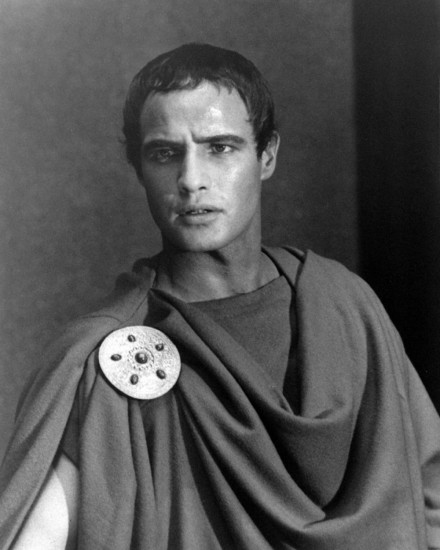
Marlon Brando would appear as Mark Antony in a screen presentation of Shakespeare’s Julius Caesar. “Brando’s Mark Antony is a subtle opportunist. A bit too quick in satisfying Caesar—moving to the side of his better ear or darting off on an errand—he displays a cunning that foreshadows his smirk as he turns away from the crowd he has aroused,” observes Susan Mizruchi in Brando Smiles (page xxvi). Marlon Brando, like most people who love literature, revered Shakespeare, and Brando owned a collection of Shakespeare plays and criticism; and, against the doubts of others, Brando played Mark Antony in the 1953 film directed by Joseph Mankiewicz, produced by John Houseman. There had been misgivings about the apparently rough, sensual actor reciting the eloquent, sensitive language of Shakespeare but the director recorded Brando reading text from the play to reassure the studio, before the film’s production. “As portrayed by Brando, Antony is a novice bidding for power in the wake of his mentor’s bloody death,” says Mizruchi (page 97).
In Shakespeare’s Julius Caesar, Caesar is popular with the citizens of the Roman republic after Caesar’s military victory, a victory that other senators—Brutus and Cassius—fear will be subverted by such idolatry. The senators resent Caesar’s rise in comparison with their own. In public Caesar’s friend Mark Antony offers him a crown, which Caesar refuses. A conspiracy against Caesar begins—with Cassius persuading Brutus to join through various entreaties, including deception—and soon Caesar is killed in the senate by the senators who wash their hands in his blood, while Antony is absent. Addressing the crowd after Caesar’s murder, Antony speaks of the good Caesar did Rome and the assembled turn against the killers. There is a civil war, and Caesar is avenged, with Roman rule being divided among Antony, Octavius, and Lepidus.
A well-made film of Shakespeare’s Julius Caesar would be welcome by appreciators of history and literature in almost any season. “Blessed with a cast of actors that conspicuously includes John Gielgud as the lean and hungry Cassius; Marlon Brando, as Mark Antony; James Mason, as the conscientious Brutus, and Louis Calhern, as Caesar, who is slain, Mr. Mankiewicz has got most of his impact out of the words that surge hotly from their throats and from the subtleties of their expressions and the violence of their attitudes,” wrote the New York Times film critic Bosley Crowther (June 5, 1953). The worries that the brooding, sensual Brando might not be up to the articulate, intellectual rigors of Shakespeare were defeated. “With Mr. Brando delivering this oration in a brilliant, electrifying splurge of bitter and passionate invective about two-thirds of the way through the film, the remaining decline and fall of Brutus and Cassius seem spiritless and drab. If ever there was an anti-climax in a film (or a play), it is here,” declared Crowther.
What could follow Marlon Brandon in Shakespeare? The Wild One was inspired by real life, by bikers taking over a rural town; and it gave a portrait of generational conflict, of threatening violence. Brando played Johnny Stabler, the leader of a motorbike group, the Black Rebels. (The film came out in December 1953.) However, while many consider the film a tame rendition of the turmoil beginning to roil society, Brando’s performance became part of his rebel legend. Brando’s participation, playing boxer and longshoreman Terry Malloy, in Elia Kazan’s On the Waterfront, a Budd Schulberg story about family, labor, and corruption, might have been compromised by Kazan’s naming of colleagues as communists to the House of Representative group investigation, something Brando did not approve of, but cast and crew performed as professionals while making the film. Yet, many years later Brando would not permit his film performances to be screened as part of a late career tribute to Kazan at the cinema industry’s Academy Awards.
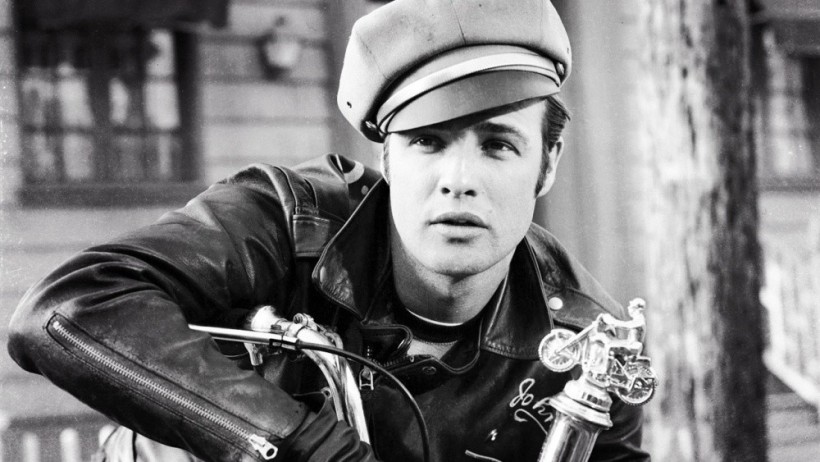
More than a few people thought Brando miscast as Napoleon in Desiree (1954) and as Sky Masterson in the musical Guys and Dolls (1955). Desiree focused on Napoleon Bonaparte’s affection for a girl Bonaparte may have sacrificed for his political career, a girl who would become the queen of Sweden. Regarding Desiree, Susan Mizruchi states, “While the script was weak and the picture essentially a drawing-room romance, Brando exploited the chance to play one of history’s great men. Bringing alive the leader’s singular determination, arrogance, and magnetism, he succeeded in producing a wholly credible Napoleon” (page 121). In the New York Times Bosley Crowther noticed a few good moments but found that “Marlon Brando’s Napoleon is just a fancy (and sometimes fatuous) façade” (November 18, 1954). Pauline Kael thought the film ridiculous but found Brando amusing—with his English accent, fake nose, and plastered hair. The Sunday Express said that Brando fumbled in the part, and the Saturday Review that he was Brando in a Napoleon suit. It is sobering to recall the mistakes of great artists—and the consensus is that Napoleon was one of Brando’s. It is not perfection that is required of artists but excellence that is expected. Despite biographer Susan Mizruchi’s commendable but indulgent faith and respect, Brando would disappoint with The Teahouse of the August Moon (1956) and Sayonara (1957).
The Young Lions remains a film worth seeking out. The screenplay was by Edward Anhalt, based on a novel by Irwin Shaw, and it was directed by Edward Dmytryk. However, the makers of The Young Lions softened Brando’s Nazi character (Christian Diestle) in the film, something Brando wanted—finding the absolute evil that Shaw wrote too simple, Brando and his collaborators made the Nazi merely an attractive young man swept up by the times. The New York Times film critic noticed the change, which presented the character as more appealing than in Shaw’s text but lessened an important fact—the murderous nature of politics and prejudice—of history and in the film. “Christian Diestle is in many ways a classic Brando character: brooding, reticent, erotically charged. Apolitical and idealistic at the film’s start, he recognizes Nazism’s fanatical elements, but hopes that they will be superseded by its democratizing potential,” writes Susan Mizruchi (Brando’s Smile; page 134). In his April 3, 1958 Times review Bosley Crowther wrote, “As played by Marion Brando, with his hair dyed a shiny corn-silk blond and his voice affecting a German accent reminiscent of Weber and Fields, this fellow is sensitive and attractive. He evokes complete sympathy. He has the gentleness of one of those nice young Germans in the memorable All Quiet on the Western Front. Indeed, there is much about The Young Lions that is mindful of that film. It is not so much anti-Nazi as it is vaguely and loosely anti-war.” One more interesting aspect of the film was the appearance of Brando’s peer and rival Montgomery Clift, often one of the most intelligent and sensitive of actors, in the film as a Jewish American, Noah Ackerman; and while some reviewers admired Clift’s work in the film, Crowther found him hollow.
Susan Mizruchi’s torch remains bright. “Brando’s acting in The Young Lions is full of distinctive moments. He makes superb use of objects: the paper horn in the New Year’s Eve scene; the napkin balls he tosses into a wineglass at the sidewalk café while impatiently awaiting the French girls. He locates the latent drama in the smallest actions—shaking the wine Francoise has overturned, in an angry outburst, off his black leather gloves; the martial click he gives his boot heels as he bows in greeting Gretchen Hardenberg, pouring a drink for Gretchen, deciding it is too much, and returning half to the bottle,” writes Mizruchi, in what might be an excess of delectation (pages 135 and 136). What is distinct, particularly insightful and suggestive, and what is mundane? Sometimes the appeal or glamour of a performer can entrance us so that we no longer can tell the difference. Thus, performers are forced to challenge themselves when their admirers will not.
Marlon Brando took on the challenge of directing a film, One-Eyed Jacks (1961). On the online pages of IndieWire (November 28, 2010), the film connoisseur and director Peter Bogdanovich has given us a succinct summary of Brando’s production of his western film of male rivalry, family, love, and violence, One-Eyed Jacks, released March 1961: “The shooting of One-Eyed Jacks —along the majestic coastline of the Monterey peninsula and in the Mexican desert—took considerably longer than scheduled and cost a good deal more than budgeted, so the Paramount front office wasn’t very happy by the time Brando was editing. They were even less happy with the picture they eventually saw, which was three hours long and had an unhappy ending. Arguments ensued, ultimatums came, the conclusion was partially re-shot, much was deleted. No one, especially Brando, was really pleased with the compromised final version, which was half-heartedly released to tepid business. Brando’s production company, Pennebaker, which had had a great many plans, never did another movie, and Marlon never directed again.” Is Bogdanovich accurate in his details? Susan Mizruchi asserts, “Contemporary reviews were almost uniformly positive” on page 153 of Brando Smiles, quoting from Hollywood Variety, The New York Times, The New York Daily News, and The Hollywood Reporter. Was not Brando’s Pennebaker involved with the film Paris Blues, starring Paul Newman and Sidney Poitier, released September 1961? Of such divergent reporting is film history made. Peter Bogdanovich did admire Brando’s performance in the film One-Eyed Jacks as well as that of the other actors. Apparently the critic Andrew Sarris considered the film One-Eyed Jacks, which he found entertaining, to be a film without a director—Sarris considered the motion picture director as providing technical competence and yet something beyond photography, editing, and acting. The director’s personality also provides a standard, as does the meaning found or invested in cinema, according to Sarris’s “Notes on the Auteur Theory in 1962.” The film critic Stanley Kauffmann, who wrote the play in which Brando made his stage debut, said in 1963 that Brando’s career might prove to be a case history, an embodiment of the trap of old theatrical concepts and contemporary pretensions.
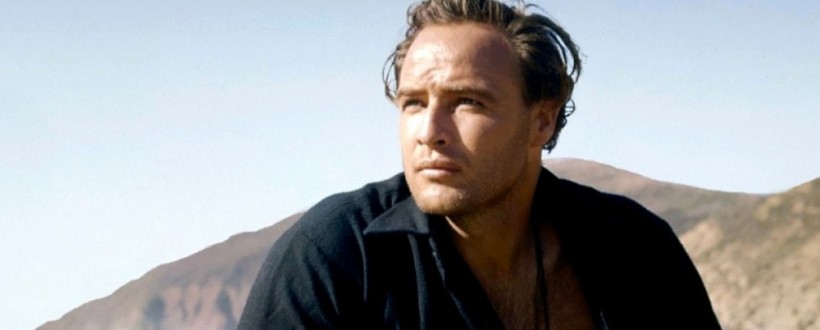
Marlon Brando appeared as a military officer infatuated with a young man in Reflections in a Golden Eye. The director John Huston was very fond of his film Reflections in a Golden Eye (1967), at one point thinking it his best film (An Open Book)—the online magazine Stylus contributor Paolo Cabrelli reminds us in his own commentary on the motion picture, in which Cabrelli perceived that Brando “gives, under Huston’s powerful direction, a performance of unmatched potency and complexity” (December 13, 2006). Brando would explore sexuality to even greater effect in Bernardo Bertolucci’s Last Tango in Paris (1972): “Paul is another of Brando’s irreverent sensualists. Nearly maddened by grief over the suicide of his wife, Rosa, at the film’s start, he takes solace gradually in an affair with a stranger in a rental apartment” (Brando’s Smile, page 223). The mystery of human motive is at play in the film, and the fact that people disguise who they are. Revelation occurs during sex—but not only then. “The power of Brando’s Paul is the power of the actor: inherent in gestures, the more unexpected the better. He shuts the door abruptly, leans against it thinking, walks slowly toward the woman, every step a threat. His face is a mask of determination as he takes her hat, tosses it on the floor and carriers her to the window. They are strangers, but he has no fear she’ll scream or run. He has read the situation correctly: youthful profligacy and independence. He knows the spell cast by a man this sure of himself” (225). However, despite The Godfather (1972) and Last Tango, much of Brando’s later career would be disparaged by critics, who did not think he pursued the great roles someone of his talent should have—Mizruchi finds merit in much of what Brando did do, in the films and in the activism on behalf of children, of Native Americans, of African Americans, and on behalf of the environment.
It is hard to argue against the necessity of a film such as A Dry White Season (1989), Euzhan Palcy’s dramatic interrogation of South African apartheid, focusing on Ben du Toit, a white teacher, and his pursuit of the arrest and beating of his black gardener’s son. Marlon Brando appeared as a lawyer in the film. Roger Ebert of The Chicago Sun-Times gave one of the most generous and understanding appreciations of Brando’s cinematic humor when assessing Brando’s performance in A Dry White Season: “Brando, in his first movie appearance since 1980, has fun with the role in the way that Charles Laughton or Orson Welles would have approached it. He allows himself theatrical gestures, droll asides, astonished double takes. His scenes are not a star turn, but an effective performance in which we see a lawyer with a brilliant mind, who uses it cynically and comically because that is his form of protest” (September 22, 1989). In the film, based on an Andre Brink story, Marlon Brando as the layer MacKenzie says, “Oh, Justice, well I’m afraid that’s a trifle more complex to serve you up than a cup of tea. You see, justice and law, Mr. du Toit, are often just…well, they, I suppose they could be described as distant cousins, and here in South Africa, they’re simply not on speaking terms at all” (quoted in Brando’s Smile; page 285). Brando is amusing. What was not as amusing was Brando’s response after screening the film before its release. Brando wanted something changed—his biographer says he was disapproving of its editing, but I recall a report that there was some improvisation of his own that was excluded that Brando wanted in, and that Brando called the studio to vociferously complain, embarrassing the director—which Mizruchi does not acknowledge. That was a bit too much for me. One can give a positive interpretation of a controversial fact, but one must acknowledge the negative assertions made. I will never forget Marlon Brando’s talent or political conscience—but I will remember as well the temper, and the foolishness, and the sexual promiscuity, and the voracious appetite for food, and the lost opportunities.


